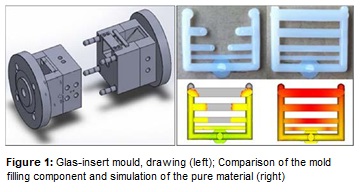
Tamara Florian
Clausthal University of Technology, Germany
Title: MSE-01: Online monitoring of the filling behavior of highly-filled polymeric materials during the injection molding process
Biography
Biography: Tamara Florian
Abstract
In the field of micro systems technology, e.g. for sensors or actuator applications, polymeric materials with functional properties (e.g. electrical conductivity or magnetic properties) are an interesting alternative to common metallic materials due to their high-efficient fabrication techniques. The desired functional property spectrum is often realized by addition of functional fillers, which inevitably influences the injection molding process. Especially the flow-ability and the mold filling behavior change dramatically due to the fillers. This behavior is critical for the quality of the final part, but cannot be predicted sufficiently until now. At present, the current standard process monitoring technologies are not adequate to provide enough information to analyze and optimize the filling behavior.
In the presented study, the flow behavior of the highly-filled polymeric materials is characterized with a glass-insert mold which is designed for direct visual analysis of the flow phenomena. The investigation is carried out using polyamide (PA 6) with ferrite micro particles of 150µm size. These particles are admixed to the polymer matrix with filler contents of 50 vol.-%, 60 vol.-% and 65 vol.-%, respectively. The flow front is observed during the filling stage with a high-speed camera. The filling behavior is simulated with commercial software (Mold Flow®), and validated with the real experiment. Based on these investigation, the processability of highly filled polymer melts are characterized both by experiment and simulation, with evaluation of the conventional simulation tools for application in highly-filled polymeric materials.

